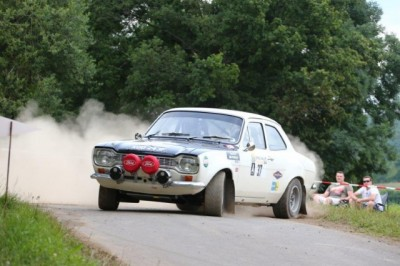Background
Whilst Ford’s rallying history can be traced back to before the Escort, with cars such as the Anglia and Lotus Cortina, 1968 is the important year as far as blue oval rally fans are concerned, as this year saw the launch of the Escort Twin Cam.
The Escort’s future in rallying was quickly cemented, as it secured wins on the Circuit of Ireland, Dutch Tulip, Austrian Alpine, Acropolis, Scottish and the Finnish 1000 Lakes rally and in so doing took the manufacturer’s title in its debut year. In 1969, the wins kept coming, as the Escort once again took the championship.
Further success came in 1970, when the Escort truly dominated arguably the toughest event in the world at the time, the London to Mexico World Cup Rally. When the cars finished in 1st, 3rd, 5th, 6th and 8th, it prompted Ford to release the iconic ‘Mexico’.
Shortly afterwards Ford replaced the Twin-Cam, with the RS1600, this upgrade further enhanced the car’s rallying pedigree as it secured wins on the RAC Rally in 1972,’73 and ’74, and on that year’s Scottish Rally every position in the top ten was occupied by an RS1600. The Escort was also a highly adaptable car, a trait demonstrated by securing wins in the mixed rallying and racing Tour of Britain in 1974,’75 and ’76.
In 1975 the new Mark II Escort was launched, resulting in a ‘the King is dead long live the King’ situation, as the Mark II RS1800 firmly picked up where the Mark I RS1600 left off.
This Car
Was registered on the 10th January 1968 making it the first ‘works’ rally Escort to be identified at Boreham chronologically that is, as it was registered several days before XOO254F and XOO262F. Built to the same original specification as other works Escorts, it was used extensively as a practice car and test mule on the events the works cars competed in during the 1968 and 1969 seasons.
The car’s only official works event occurred in May 1969 when it finished 2nd overall (to Pauli Toivonen’s Porsche 911S) on the Acropolis Rally in the hands of Roger Clark. It could have arguably finished 1st overall had it not been stranded off the road for no less than 12 minutes in one stage and later suffered an engine misfire and several punctures.
Soon after returning from Greece, it was sold and became part of the David Sutton stable.
Technical
Engine : Four-cylinder, 1.59ltr, in-line, longitudinally mounted in the front of the car, four valves per cylinder, 160 bhp
Induction : Twin Webber 40s, Normally Aspirated

